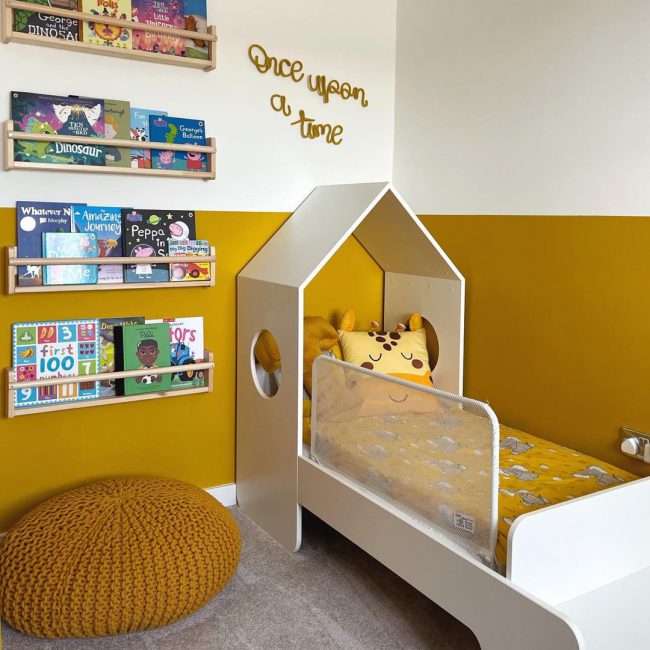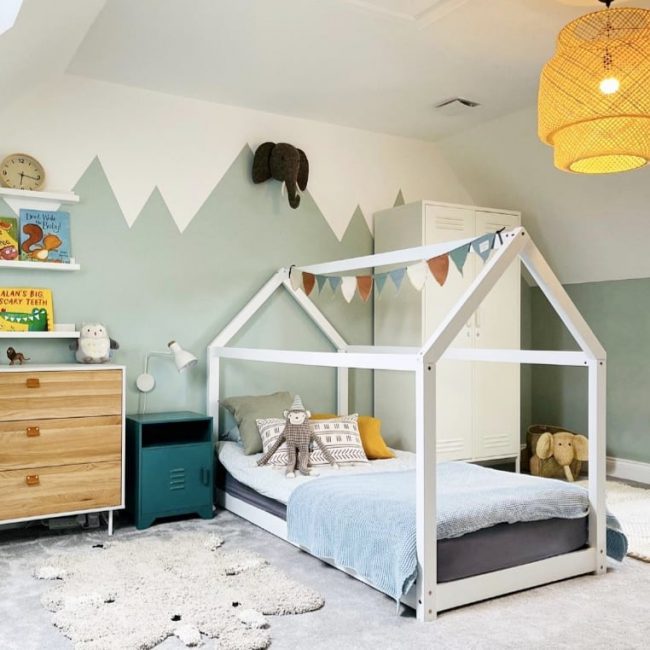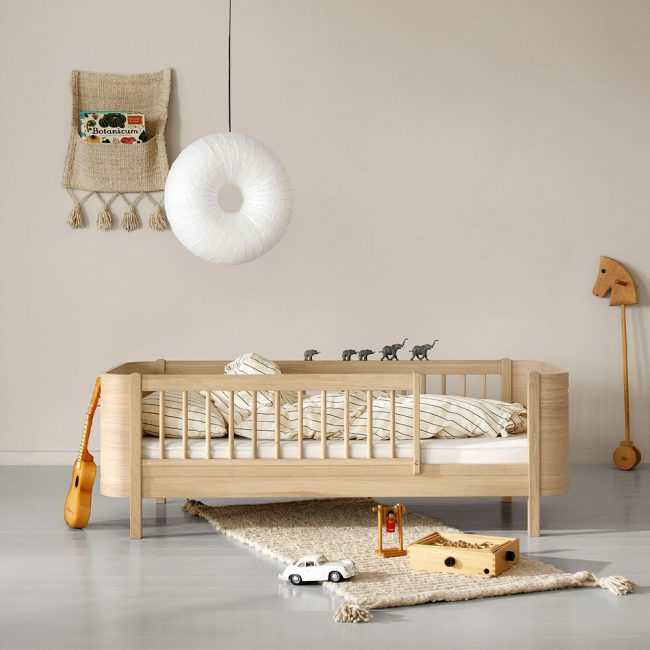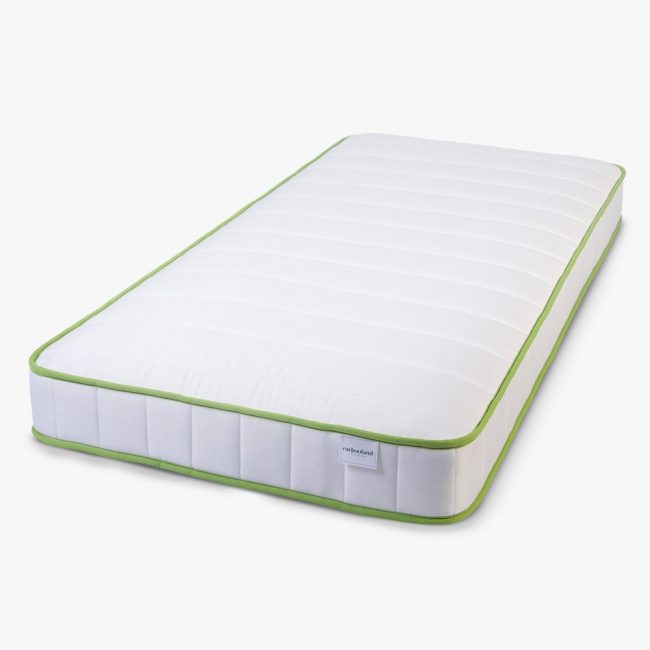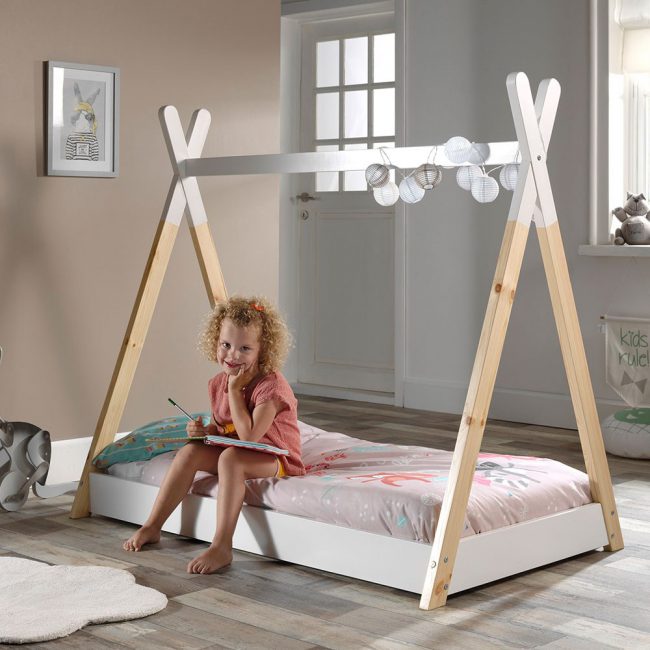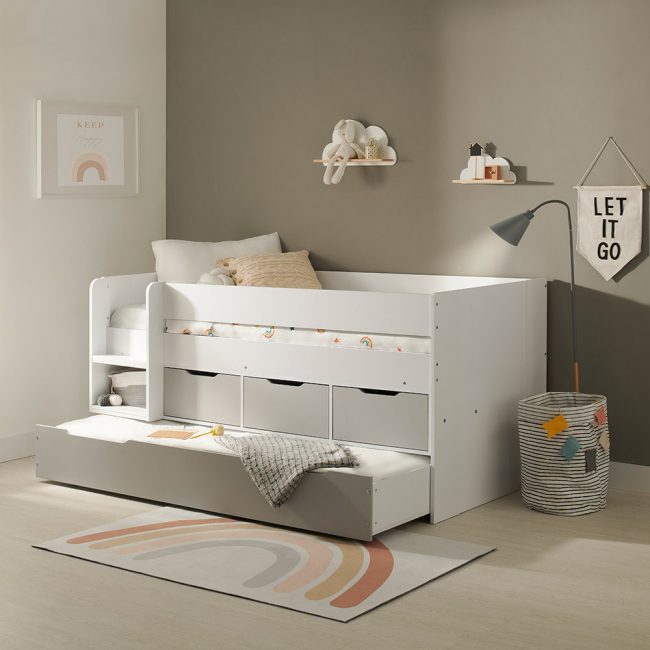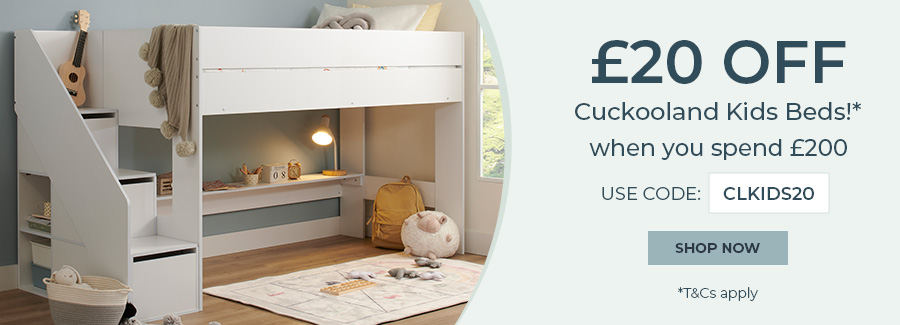How to Encourage Independent Sleep in Toddlers
We know getting your toddler to fall and stay asleep in their own bed can be a battle for many tired parents.
No matter how many times you return them to their room, all too often, by morning, there’ll be a tiny tot snuggled up with you, somehow taking up 90% of the bed while you cling to the edge – even if you buy a bigger bed!
Sound familiar? Then check out these top tips for encouraging your little one to sleep independently in the kid’s bed you’ve lovingly selected for them – so you can reclaim some mattress space for yourself!
1. Design their room for sleep
The first step in encouraging your toddler to sleep independently is to create a room environment to help them feel safe and comfortable. If you’re transitioning your child from a cot to a toddler bed, position it in the same place in their room to ease the transition.
Our top tips are to choose a low or floor-level toddler or single bed that’s easy for your child to get into by themselves. A bed with rails will help them to feel secure and keep them and any comforting toys from falling out of bed. Babyproof the room to make sure your toddler can’t hurt themselves if they do get up in the night.
Keep the room at a comfortable temperature (18 – 22 degrees is ideal) and install blackout curtains to block out sleep-disrupting light. Make up the bed with organic cotton kid’s bedding that will be soft and breathable against your toddler’s skin. Try to avoid synthetic fabrics such as polyester, which can be irritating.
Choose a kid’s mattress that will keep your child comfortable and help regulate their temperature while they sleep. Our DualDreams Climate-Smart Kids Mattress is double-sided, with a summer and winter side, so you can turn it to suit the season.
2. Use calming accessories
Many children have a favourite toy or blanket that they need to feel safe and calm (and just can’t be lost, ever!) Make sure this is with them when you tuck them into bed. Your little one might also find a mobile, a nightlight, calming music or a white noise machine helpful to soothe them to sleep.
3. Eliminate distractions
Remove any distractions, such as screens or games, that they’ve been playing with during the day from your toddler’s room. Screens should be limited in the evening and avoided entirely for at least an hour before bed. If you have the space, try to keep playtime out of their bedroom so they associate the room with sleep.
4. Create a consistent bedtime routine
A good bedtime routine is key to helping your toddler wind down for bed and fall asleep independently. The routine should start approximately an hour before bedtime. Try to keep to the same actions at the same time each night.
Your routine might consist of a bath, pyjamas and teeth brushing before heading to bed for cuddles and a bedtime story. Allow your little one to choose the story, to get them excited for bedtime. Then, dim the lights and kiss them goodnight (and put on music or a white noise machine, if required).
5. Talk to your toddler
If your toddler is struggling to sleep or stay in their own bed, try asking them about the reasons why. Depending on their age and communication skills, you may be able to discern the cause of the problem. For example, they might confess they are scared of the dark or worried about being left alone, which you can then address.
6. Cuddle and console
If your child has recently transitioned from falling asleep on you and being placed in their cot, to sleeping alone in their toddler bed, they might be struggling with being away from you.
In this case, try leaving your child’s room after tucking them into bed and kissing them goodnight. If you hear them start to cry, wait for 5 minutes, then enter, give them a reassuring hug until they calm down, and leave the room.
Repeat this process until your child falls asleep. Eventually, they will learn to feel comfortable being alone, as you are there if they need them. Hopefully, that underlying feeling of safety will enable them to soothe themselves before you need to come in.
7. Allow them to cry it out
If your toddler is still unable to self-soothe, the ‘cry it out’ method could be a suitable alternative. This method is understandably controversial, as no parent likes to listen to their child cry and not comfort them. However, it might work if your child is determined!
In this method, you don’t re-enter your child’s room after you’ve tucked them in for the night, even if they cry. You can still come briefly to the doorway to reassure them that you’re there and that they’re ok – but don’t go in.
8. Stay in their room
If you still can’t get your toddler to sleep independently, you might need to stay in their room until they fall asleep.
In this instance, you could use a blow-up mattress or a trundle bed in your toddler’s room, giving you somewhere to lie next to your little one as they drift off.
After a few days of lying next to your toddler while they fall asleep, transition to sitting in a chair next to their bed, and then finally to leaving the room once you’ve tucked them in.
9. Use a reward system
If your child is prone to getting up during the night, you could introduce a rewards system to encourage them to stay in bed. This might consist of a sticker chart or other visual aid so your little one can see how close they are to receiving a reward, such as a book or toy.
10. Seek professional help
Every child is different, and the techniques that work for one won’t necessarily work for another – even siblings. Most sleep issues are temporary and your toddler will eventually grow out of them. However, if things don’t improve and you’re concerned your little one might have a sleep disorder or other underlying issue, be sure to consult your doctor for advice.
Time to Reclaim Your Bed?
Try these tips to help your little one sleep in their own bed so you can have yours to yourself again! If you have any questions about our kid’s beds, don’t hesitate to call us on +44 (0) 1305 231231 or email customerservice@cuckooland.com. We have everything from cot beds to toddler beds, bunk beds to gaming beds – and we love to talk about them!
